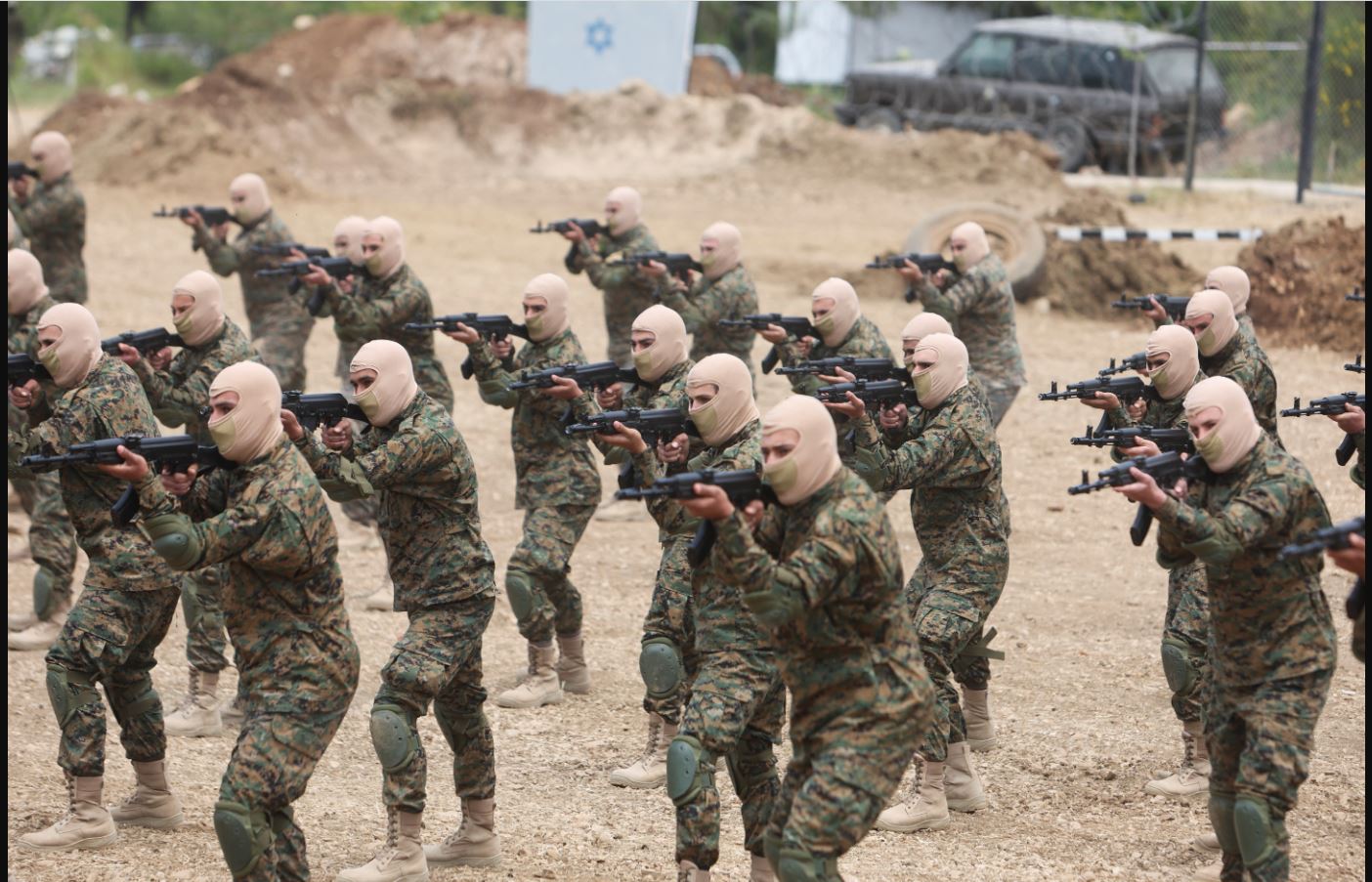Hezbollah’s anti-ship missiles bolster its threat to US navy
Beirut (Reuters) – Powerful Russian anti-ship missiles acquired by Hezbollah give it the means to deliver on its leader’s veiled threat against U.S. warships and underline the grave risks of any regional war, sources familiar with the group’s arsenal say.
Hezbollah leader Sayyed Hassan Nasrallah warned Washington last week his group had something in store for the U.S. vessels deployed to the region since war erupted last month between the Palestinian group Hamas and Israel, shaking the wider Middle East.
Two sources in Lebanon familiar with the Iran-backed group’s arsenal say he was referring to Hezbollah’s greatly enhanced anti-ship missile capabilities, including the Russian-made Yakhont missile with a range of 300 km (186 miles).
Reports by media and analysts have for years indicated that Hezbollah acquired Yakhont missiles in Syria after deploying there more than a decade ago to help President Bashar al-Assad fight a civil war.
Hezbollah has never confirmed possessing the weapon.
The Shi’ite group’s media office did not immediately respond when reached for comment for this story.
Washington says its Mediterranean naval deployment – comprising two aircraft carriers and their supporting ships – aims to prevent the conflict from spreading by deterring Iran, which backs groups including Hamas, Hezbollah, and Palestinian Islamic Jihad.
Hezbollah perceives the U.S. warships as a direct threat because of their ability to hit the group and its allies.
Nasrallah said in a speech on Friday that the U.S. warships in the Mediterranean “do not scare us, and will not scare us”.
“We have prepared for the fleets with which you threaten us,” he said.
The White House said after Nasrallah delivered his Friday speech that Hezbollah must not exploit the Hamas-Israel war, and the United States did not want to see the conflict expand into Lebanon.
One of the sources said Hezbollah’s anti-ship capabilities had developed enormously since 2006, when the group first demonstrated it could strike a vessel at sea by hitting an Israeli warship in the Mediterranean during a war with Israel.
“There’s the Yakhont, and of course there are other things besides it,” the source said, without elaborating.
The source added that use of this weapon by Hezbollah against hostile warships would indicate the conflict had escalated into a major regional war.
Paying Attention
Three current and one former U.S. official said Hezbollah has built an impressive array of weapons, including anti-ship missiles.
“We’re obviously paying a lot of attention to that… and we’re taking what capabilities they have seriously,” one official said, without commenting directly on whether the group had the Yakhont missile.
The officials spoke on the condition of anonymity to comment candidly about Hezbollah’s capabilities.
The U.S. officials added that the U.S. naval power recently deployed to the region includes defenses against incoming missiles. They did not elaborate.
The Pentagon has deployed warships to the eastern Mediterranean since Oct. 7, when Hamas gunmen stormed Israel from the Gaza Strip in an attack Israel says killed 1,400 people.
Israeli attacks on the Gaza Strip have killed more than 10,000 Palestinians since then, Palestinian officials say.
Nasrallah on Friday warned Washington that preventing a regional war depended on halting the Israeli assault. Hezbollah has been trading fire with Israeli forces at the Lebanese border since Oct. 8. That marks the most serious escalation there since the 2006 war.
But Hezbollah has so far used only a fraction of its arsenal and the violence has mostly been contained to the border area.
Other Iran-aligned groups such as Yemen’s Houthis have also fired drones towards Israel while Iran-backed Shi’ite Muslim militias have fired at U.S. forces in Iraq and Syria.
The ground-launched Yakhont approaches its target at low altitude – 10 to 15 metres (yards) off the ground – to avoid detection, according to a report by the Washington-based Center for Strategic and International Studies (CSIS).
The Yakhont, a variant of the P-800 Oniks missile first developed in 1993, was developed in 1999 for export by a Russian defence firm and can be launched from the air, the ground or submarines, CSIS said.
Asked about the sources’ accounts of Hezbollah having acquired Yakhont missiles, Kremlin spokesman Dmitry Peskov said: “First of all, this is news without any confirmation at all. We do not know if it is true or not.”
“Secondly, we do not have such information.”
The Russian defence ministry did not reply to a written request for comment. The Syrian information ministry did not immediately reply to emailed questions from Reuters.
‘Prepared And Ready’
Nasrallah’s Friday speech marked one of his strongest warnings yet to the United States, which holds his group responsible for a suicide attack that destroyed U.S. Marines headquarters in Beirut in 1983, killing 241 servicemen, and for a suicide attack on the U.S. embassy the same year that killed 63 people.
While Hezbollah has denied being behind those attacks, Nasrallah indirectly referred to them in his speech, saying those who defeated the United States in Lebanon in the early 1980s were “still alive”.
Nasser Qandil, a Lebanese political analyst close to Hezbollah, explained how the Yakhont missiles in the group’s arsenal could be used against U.S. warships, in remarks on his private Youtube channel posted last month.
He described the missile as “the most important prize” of Hezbollah’s involvement in the war in Syria, where the group helped turn the tide of the civil war in Assad’s favour.
“Yes, Hezbollah is prepared and ready,” Qandil said.
The two sources who spoke to Reuters said Hezbollah obtained the weapon from Syria whilst fighting in support of Assad, whose military has long been armed by Russia.
Hezbollah keeps its arsenal and how it is sourced shrouded in secrecy. In rare comments on the topic in 2021, Nasrallah explained how the group had obtained Russian-made Kornet anti-tank missiles via Syria.
In an interview with the Lebanese, Iran-aligned broadcaster al-Mayadeen, he said the Syrian defence ministry had purchased the weapons from Russia for Syrian use, and Hezbollah had later taken them as a form of “support” to defend Lebanon.
Hezbollah used the weapon extensively in the 2006 war.
Moscow said in 2010 it had signed a deal to send anti-ship cruise missiles including a version of the Yakhont to Damascus.



